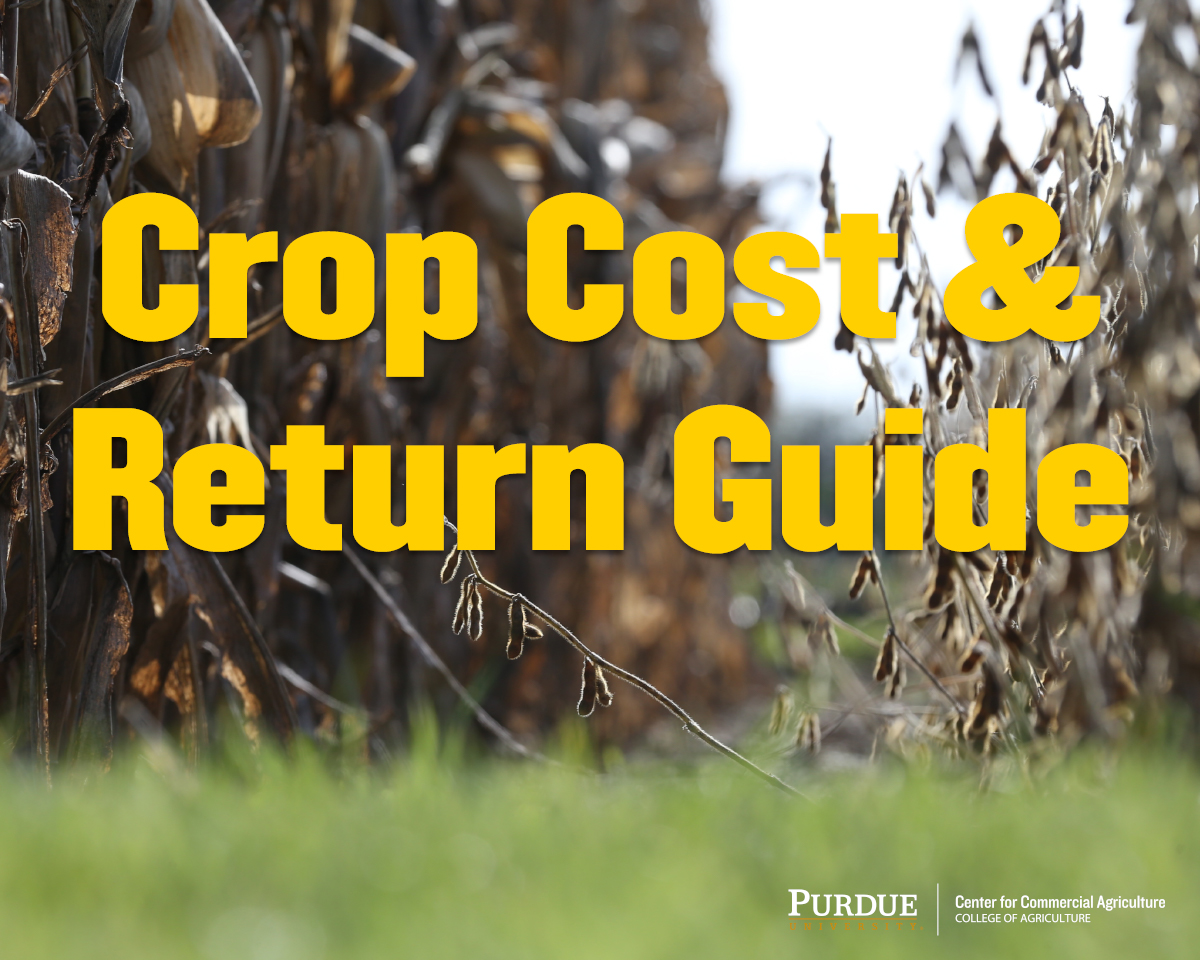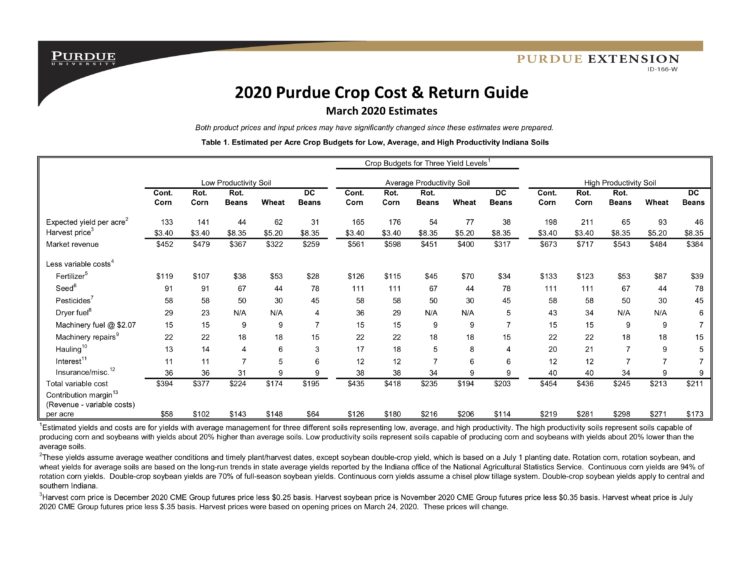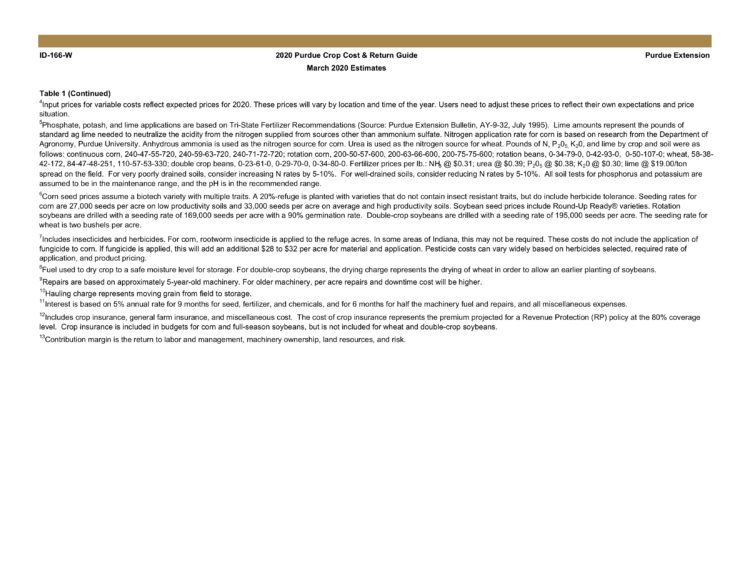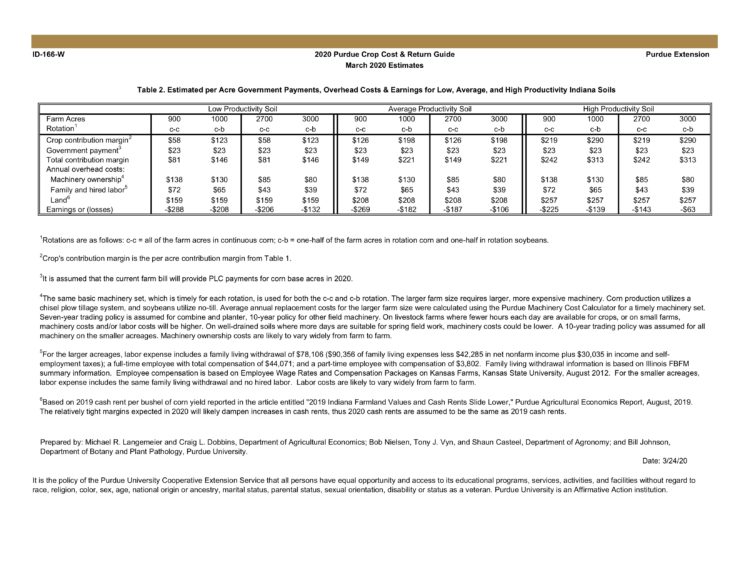Archived Crop Budgets
Historical Crop Cost & Return Guides can be accessed in our archive, which date back to 2002.
March 1, 2020
2020 Crop Cost and Return Guide
March 2020 Estimates
The Purdue Crop Cost and Return Guide offers farmers a resource to project financials for the coming cropping year. These are the March 2020 crop budget estimations for 2020; prepared by Purdue faculty members Craig Dobbins and Michael Langemeier, Department of Agricultural Economics; Bob Nielsen, Tony Vyn and Shaun Casteel, Department of Agronomy; and Bill Johnson, Department of Botany and Plant Pathology.

TAGS:
TEAM LINKS:
RELATED RESOURCES
Margaret Lippsmeyer presented during agri benchmark’s 2024 annual conference in mid June, which was hosted by the Spanish Ministry of Agriculture in Valladolid, Spain. An increase in soybean acreage may come from either (a) shifting away from continuous corn rotations to corn-soy and (b) shifting corn-soy rotations toward corn-soy-soy. Based on agri benchmark data, Margaret showed that option (a) would require an increase in soybean prices of 6% and option (b) of 8% to make these rotations preferable over existing ones.
READ MOREUPCOMING EVENTS
We are taking a short break, but please plan to join us at one of our future programs that is a little farther in the future.







